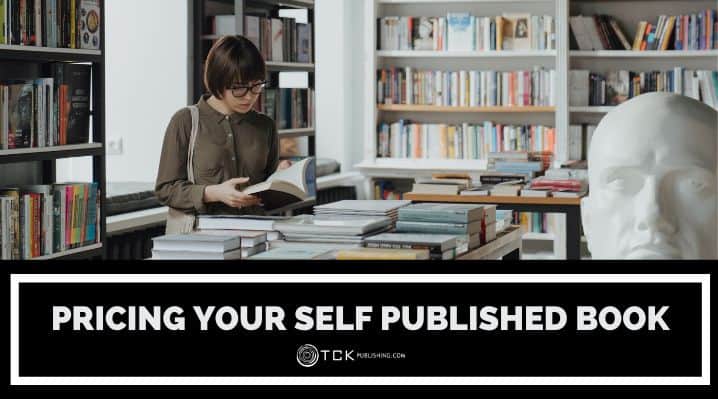
What is your book worth? Charge too much, and you’ll scare off potential readers; charge too little, and you risk undervaluing your hard work. So how do you find the sweet spot between sales and revenue?
Pricing Matters
The price of your work is one of the first things a potential reader will see. As such, it’s also one of the first elements you’ll be judged on. You need to find a price that is worth it for both of you.
Many factors affect your pricing, both concrete (publishing costs, format, royalties) and abstract (genre expectations, hours worked, writing quality). One of the biggest challenges is that your perception of your book’s worth may differ from your readers.
Tips on Pricing Your Book
Below are some factors you need to consider when finding the right price for your book.
Market Research
Research is a solid step toward pricing your work fairly and positioning it correctly in the current market. There are three things you should check:
- Competitor Pricing—Search for books in your niche and see what they’re charging. Find similar titles that discuss the same or related topics. If you can’t find any, then this is your chance to establish yourself and stand out.
- Bestsellers—Look at bestseller lists from different organizations and analyze their pricing. You might not be able to match them yet, but it’s a good way to gauge expectations within your genre.
- Trends—Trends affect demand and pricing. The more demand there is, the higher you can set your price. See what trends you can take advantage of.
Market research can be as simple as doing a Google search or as complicated as using tools and analyzing data. Start with a simple and broad approach, then gradually narrow it down.
Different Formats, Different Prices
Digital and print are currently the most popular formats in publishing. Both have different production processes, thus affecting your prices.
For example, ebooks have much lower production costs than print books. While you could price them the same as print books, potential readers may find it unreasonable, as it simply doesn’t make sense.
For print books, you need to factor in production costs—materials, printing, and distribution. Even small details like page length and adding color will affect your profit margins.
Strike a balance between the two. Too much of a difference in pricing might devalue one format over the other.
Perception
Pricing isn’t just about numbers, but also perception. People will buy your book if they think and feel it is worth the price.
To many readers, a physical book is more valuable than a digital one. They are collectible and tactile, have a sense of permanence, and are aesthetically appealing.
Longer books often justify a higher price, not just due to higher production costs, but because readers understand they took more time and effort to make.
A seasoned author can also charge more because they have established their authority. People are more likely to buy a $50 ebook from someone famous than an unknown author. Fans of a particular author are also more willing to pay a premium for their books.
And people often associate price with quality. If you price your book too low, they’ll assume that it is poorly written.
Pricing Strategies
You can use plenty of strategies to position and sell your work in the market.
- Price Anchoring—Consider starting with a slightly higher price, which you can lower later on with promotions or discounts. This way, you can create a sense of urgency and make your readers feel like they’re getting a good deal.
- Perceived Value—Don’t price too low. Make your book too cheap and your audience will think it is of low quality. Set a price that’s near what readers expect of similar books.
- The 99 Effect—People tend to focus on the leftmost digit of a price. So while $4.99 and $5.00 are almost identical, the $4.99 price feels like a better deal because it appears lower at first glance.
Genre and Category
Most nonfiction books are pricier than fiction because they bank on the author’s expertise and experience. Even within both categories, some genres command higher prices than others, mainly because of popularity.
Profit Margins
You’re not just an author, but also a businessperson. At the very least, you should aim to cover your self-publishing costs. Keep track of your spending and use it as a reference when setting a price.
Platform Specifics
Familiarize yourself with your chosen platform’s guidelines. They might have a set of rules about pricing and royalties.
For example, Amazon—the largest ebook market—sets minimum and maximum prices for ebooks. If you choose to set it between $0.99 and $2.98, you get a 35% royalty. From $2.99 to $9.99, you get a 70% royalty.
Rules will change per platform and format. Understand them well before launching your book.
What is Your Book Worth?
Whether you’re a first-time author or haven’t gone through professional publishing, it doesn’t matter. Your book has value. You’ve put in the time, effort, and passion to bring it to life, so don’t sell yourself short.
But don’t let profit be your biggest motivator in pricing. Remember, setting a high price means little if you don’t sell many copies.
What other tips do you have for pricing a book? Share them below!
If you enjoyed this post, then you might also like:
- How to Publish a Book: The Ultimate Guide to Book Publishing in 2022
- 10 Things You Should Know About Amazon Self Publishing
- How to Make an Audiobook: A Guide to Self Publishing Audiobooks

Cole is a blog writer and aspiring novelist. He has a degree in Communications and is an advocate of media and information literacy and responsible media practices. Aside from his interest in technology, crafts, and food, he’s also your typical science fiction and fantasy junkie, spending most of his free time reading through an ever-growing to-be-read list. It’s either that or procrastinating over actually writing his book. Wish him luck!
